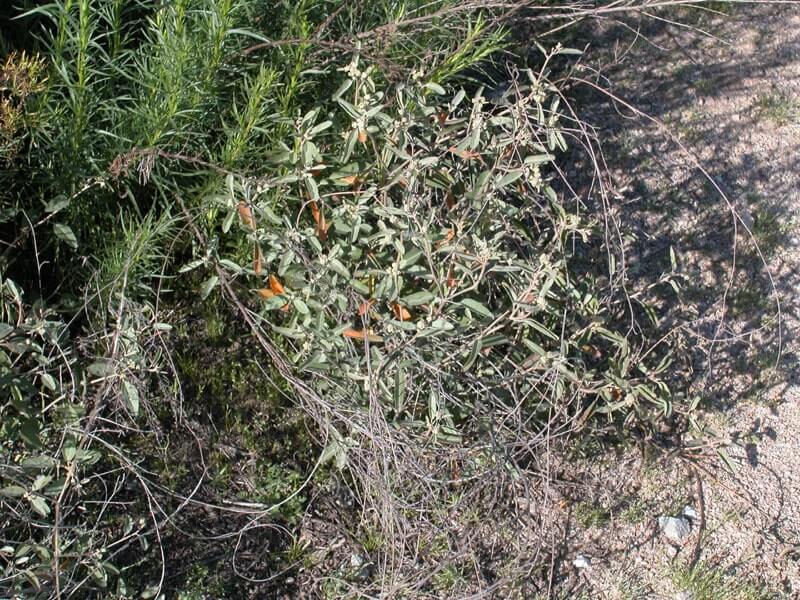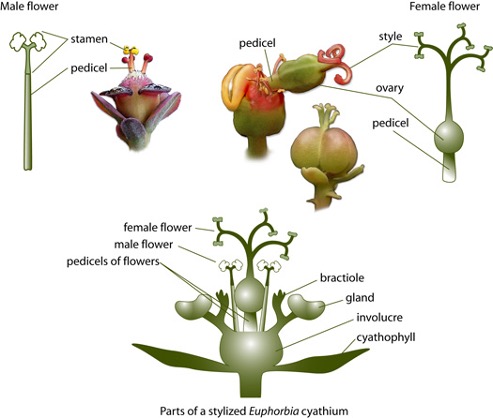The Euphorbiaceae
The Euphorbiaceae contains a wide range of species, including some that are common house plants, like poinsettia and the rubber tree. They often exude a milky latex when wounded.
Common features of the Euphorbiaceae include:
- Unisexual (imperfect) flowers
- Lack of petals (usually)
- Most of our species have distinctive, branched or forked styles
These unisexual flowers may be arranged differently in different species.
In Ricinus communis (castor bean) the plant is monoecious. Both staminate and pistillate flowers occur on the same plant.
Some species in the Euphorbiaceae are dioecious. Croton californicus, pictured below is an example.

If you look closely at some plants, you will see that all of the flowers on a plant look like those on Plant #1 (below). If you look at other plants, all of their flowers will look like those on Plant #2.
A third, very distinctive arrangement of unisexual flowers in some members of the Euphorbiaceae is called a cyathium. A cyathium resembles a flower, but it actually consists of multiple unisexual flowers with a pistillate flower in the center, surrounded by very reduced staminate flowers. The involucre that surrounds this group of flowers has nectaries, called glands. These glands often have flat or horn-like projections called gland appendages, or more often just "appendages".

Below are drawings of a cyathium of Euphorbia peplus and a longitudinal section through the cyathium.